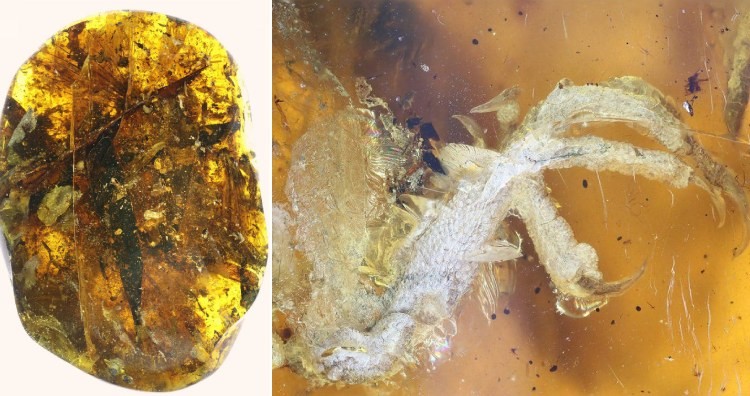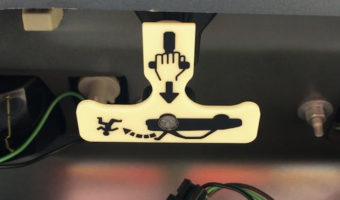10 Amber Fossils that Are Incredibly Preserved
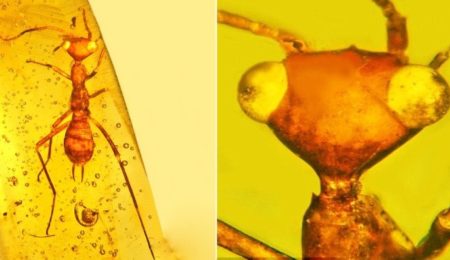
Researchers and paleontologists are on a never-ending quest to find life forms that date back millions of years to find the roots of our evolution as well as more about the life forms on the planet. So far, many discoveries of fossils have led them to understand ancient species and help them compare with new species. Amber fossils are one such frequently found fossils which are plant resins that have entrapped insects and similar small creatures from millions of years ago. Here are 10 amber fossils that are incredibly preserved.
1 A baby bird fossil was discovered with its head, feathers, and feet incredibly preserved in Burma. The newborn belongs to a now-extinct branch of the family of birds called Enantiornithines. The specimen gives an insight into the early avian species that can take care of themselves in the early stages after birth.
A fully preserved bird intact for almost 100 million years old was found in fossilized tree sap. It is the most perfectly preserved avian life in history. The body including claws, head, and the wing is clearly seen. The wingtips had claws and there were teeth tucked away in its beak. The fossil has helped scientists tremendously in their study of the ancient world.
Unlike modern birds, studies suggested that these early birds could take to the skies much earlier in life. They developed their flight feathers when they were hatching, and they were not confined to the nest in the early stages of their life. The amber is on display at the Shanghai Museum of Natural History. (1, 2)
2 A new scorpion species was found in a cloudy amber in Chiapas, Mexico. The occurrence of fossils of a rare adult scorpion was discovered here. The Chiapas fossil constitutes a large and outstanding preservation of species in plant resin. These scorpions are primarily modern living forms from ancient mangrove-like environments.
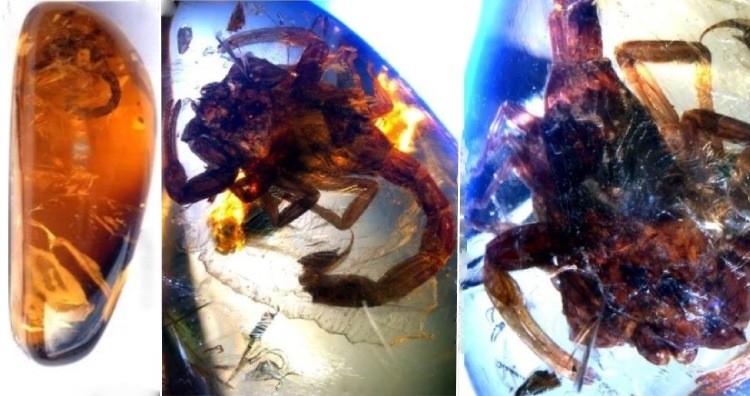
An entire adult male scorpion was found in the Miocene rocks of Chiapas. The resin bed of Chiapas is famous for organic preservation inside tree resin. Only two other fossils of the same species are found before. The scorpion has been placed into the genus of Tityus koch. Fossil scorpions were found from the Cretaceous period. But New World Scorpions are rarely found trapped as amber fossils.
The Chiapas fossils are primary forms of scorpions that lived in mangrove-like environments. The amber is colorful and crystallized. It shows the characteristics of Tityus scorpions and also has similarities to Neotropical living forms that are currently found only in the Caribbean, South, and Central America. The amber piece was found by a native farmer. Extinct legume tree fossils of Chiapas are extremely rare and produce well-preserved fossils. (Source)
3 An amber fossil from 100 million years ago has an insect so ancient and strange that discoverers have made a new scientific classification for it. It has a triangular neck, weirdly positioned eyes, and neck glands. It was named Aethiocarenus burmanicus.Â
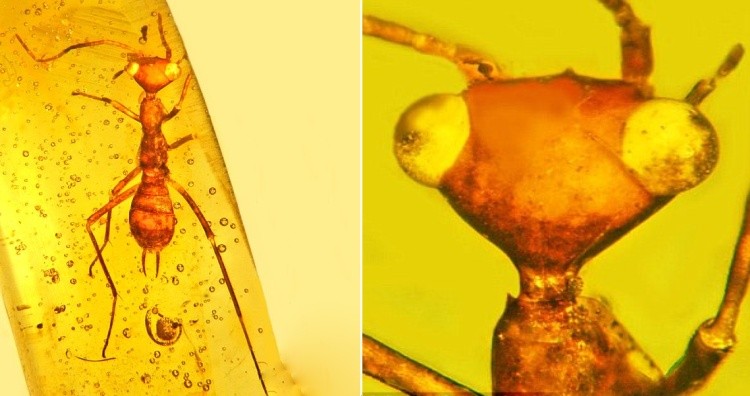
Scientists found a critter that exhibited never-before-seen features. It had a triangle-shaped head, has glands on its neck, and has weirdly positioned googly eyes. There are around one million insect species in the world that fit easily into the 31 existing orders, but the researchers had to come up with a completely new classification to catalog this insect.
Researchers came to a conclusion the unique features of this insect suited only a particular environment existing then, and when that environment changed, they went extinct. The specimen was found in Hukawng Valley. The scientists mentioned it is alien-looking and compared it to the “ET.” They believe it was an omnivore and could have had the ability to see behind itself, too, judging by the look of the head. (Source)
4 Researchers found an incredibly preserved amber fossil that revealed bugs in dinosaur feathers. The Mesozoic period also was rife with the infestation of parasites that damaged feathers. This piece was found to be 100 million years old and was found in Burma. This fossil is considered to be the oldest feather-chewing fossil record.
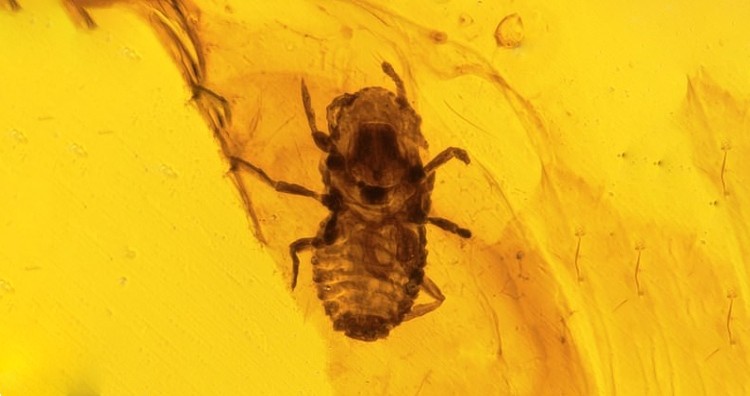
An insight into the lice infestation from the early Cretaceous period has been found in an amber fossil that is 100 million years old. Insects that resembled lice used to dwell on dinosaur bodies. The amber gives a detailed view of the feather damage it has done to the feather. Bugs like these are found to be preserved with several other fossils.
The fossil gives the primary details about parasites that lived off animal hair. The fossil is incredibly preserved giving the paleontologists a lot to work with. Parasites have been the cause of plagues and many diseases in the modern day. Studying them will help the scientists enormously in understanding how they evolved from living on a host to ones that live with us today. (source)
5 A team of researchers found a Baltic amber of carnivorous plants that are believed to be the oldest examples of carnivorous plants. The fossil was found in Russia by German collectors. It dates back to 35 to 47 million years ago when Europe was warmer.Â
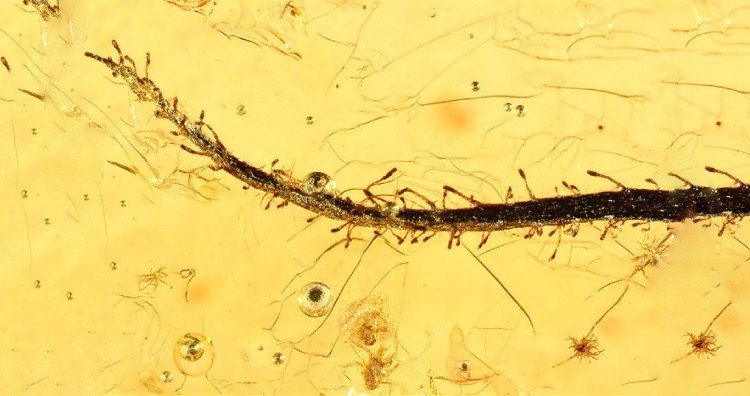
Scientists in institutions in Germany found plants that are carnivorous, which will help in studying modern carnivorous plants. The preserved carnivorous plant was embedded in a Baltic amber date from the Eocene period. A trove of such plant fossils was found in Russia and scientists have been mining for tons of such samples for the past 100 years. This is the oldest example that carnivorous plants existed at the time.
These plants are believed to be from 35 to 47 million years ago. As plant fossils are rare and mostly very poorly preserved, this is a rare find for researchers and a perfect research material. They have classified the plant to be Roridula, which isn’t technically a carnivore as they do not eat the insects. They trap them so that they can feed off of the excreta that bigger insects leave while they come and eat the smaller insects. (Source)














